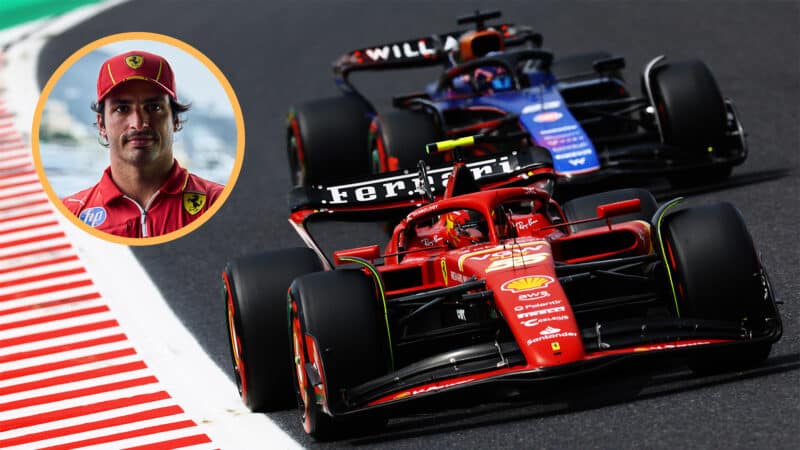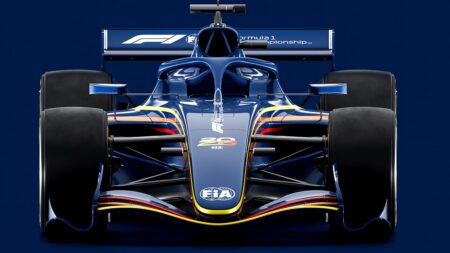“And I’m going to focus on maximising that opportunity because any given weekend, right now, I could be on the podium, or I could win a race. And this gives me joy, gives me a really good feeling.
“Everything else that you’ve talked about it, it’s F1, it’s been part of F1, it’s so many other things involved inside the teams. It is obviously always complicated to understand the dynamics of F1 when you see it from the outside, but when you see it from the inside, everyone has a reason to take the decisions they have taken.
“So for me we say it’s ‘everyday bread’ that I’ve been seeing in F1 for so many years.”
Even before the Mercedes and RBR chances evaporated Sainz was linked to a future at Audi, with an interim 2025 season under the current Sauber name.
It makes sense in many ways. His father has long been associated with the marque, it’s going to be a well-resourced works team with all that entails, and his former McLaren boss Andreas Seidl is in charge and keen to get him on board as a partner for Nico Hülkenberg.
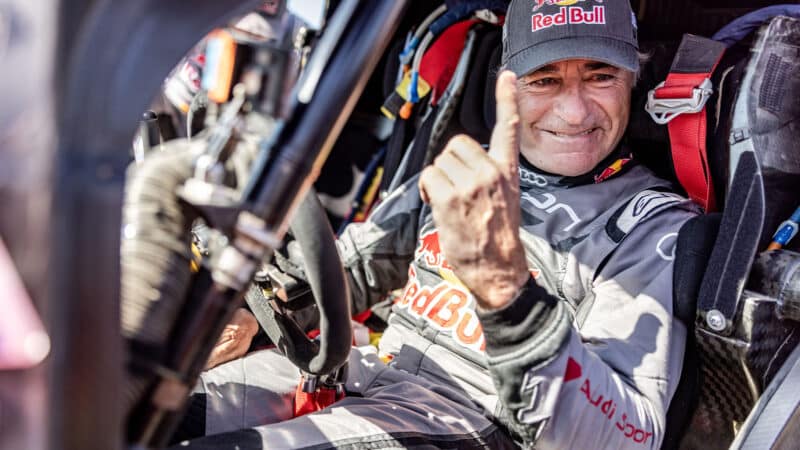
Carlos Sainz Sr won the world-renowned Dakar Rally with Audi in 2024 — could his son achieve similar feats for the F1 outfit in 2025?
Dakar
The downside is that Sauber is currently struggling, and while the Swiss operation is being rebuilt and new arrivals are coming all the time next season might not be much better than this. There’s still much to be done by 2026.
With a return to Enstone perhaps not looking attractive and Alpine seemingly edging towards a Pierre Gasly/Jack Doohan line-up Sainz now appears to have a straight choice between Hinwil and Grove.
Williams has already confirmed Alex Albon for the long-term, and its interest in Sainz is a further indication of its ambitions as James Vowles tries to put the pieces together.
After compromised years with the likes of Nicholas Latifi and Logan Sargeant one of the key elements is to have two very strong drivers pushing each other along and scoring points, something that it hasn’t had since Felipe Massa was paired with Valtteri Bottas in 2014-‘16.
Drivers with sponsorship are always welcome, but in the era of the budget cap you also have factor in the crash damage that comes with training a rookie. In recent years Albon and before him George Russell have carried the team’s hopes in the constructors’ championship on their own.
Vowles has made it clear that Sainz is his number one target as he seeks a team-mate for Albon.
“First and foremost, I think Carlos is an exceptional driver,” he noted in Montreal. “He’s a race-winning driver. And I think any team would be privileged to have him as a part of their organisation.”
So why does Williams have appeal for Sainz? Over the past couple of years Albon has shown that the team is capable of challenging for points on a regular basis, and that’s despite an ongoing weight issue that Vowles is intent on finally tackling for next year. The FW47 will also be first car built under technical director Pat Fry, who joined late last year.
Vowles has made Sainz fully aware of his plans, and underlined the commitment of owners Dorilton. The fact that he has also made a very public pitch to Adrian Newey is another clear sign of how serious those ambitions are.
The key aspect however is that the team has an ongoing deal to use a Mercedes power unit. At this stage no one knows how the six manufacturers will perform in 2026, but it’s logical to assume that the current incumbents have a better chance of getting off to a flying start than Audi and RBP/Ford.
History relates just how well Mercedes and HPP kickstarted the hybrid era in 2014. While that was a decade ago and key players have moved on (many of them to Red Bull) the odds are still tipped in the favour of the Brixworth camp getting its sums right and at least being in the ballpark with current pacesetters Honda and Ferrari, even if it is unlikely to get the jump on rivals that it had last time.
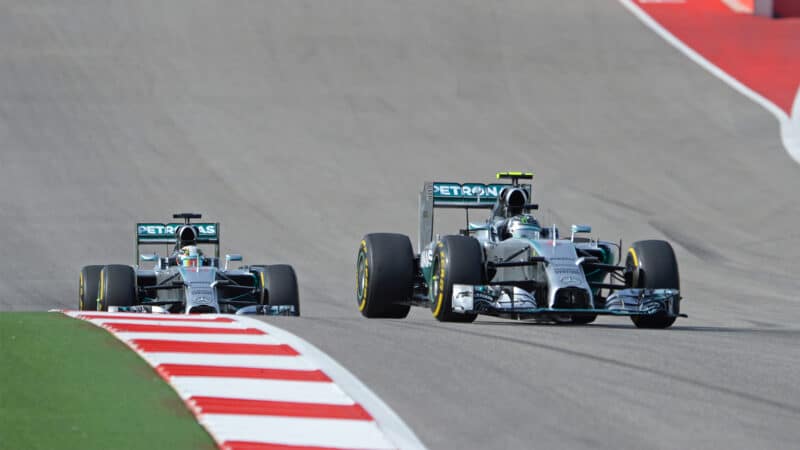
Mercedes were the class of the field in 2014, with Lewis Hamilton and Nico Rosberg splitting 16 race victories between them
Grand Prix Photo
It’s worth recalling how Williams fared at the start of hybrid era. In 2013, the last season of V8s, the team finished ninth in the championship on five points. In 2014 with the new V6 Bottas and Massa shared nine podiums and the team finished third with 320 points. It earned the same position in 2015 before a lack of funding and improving rivals triggered the downward spiral that is now being addressed.
Albon admits that he sees the Mercedes factor as the key to the team’s future, and he cites 2014 as inspiration.
“It’s going to take time, I still think we’re in a rebuilding phase,” says the Thai/British driver. “I don’t think in ’26 we’re going to be all there. Every team is kind of putting their words and efforts into 2026 being a reset for everyone, I still think it’s going to take a little bit longer.
“But what I’m hoping is that we can have the PU kind of carry us a little bit. I remind myself a little bit towards 2014, that kind of style of it, where there might be a bit of a gap to whoever’s at the very front, but it puts us in a good place, and we can still be building and developing and changing parts of the team. And then by ’27 we can really make bigger steps.”
Sainz makes it clear that he’s entertained similar thoughts as he’s studied the 2026 packages on offer.
The appeal of being a works Audi driver is obvious. But can he afford to spend 2025 in potentially the slowest car on the grid and then lose a few seasons waiting for a brand-new PU to get up to speed?
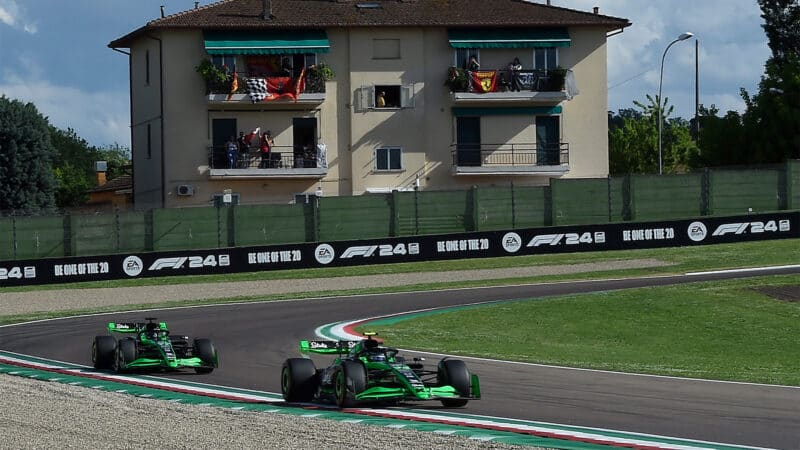
Sauber has become a regular feature at the back of the grid in 2024
Grand Prix Photo
Williams won’t have a winning car next season, but the team should at least be a decent points contender.
“I’m still a firm believer that in F1 to be successful you need a medium to long-term project,” says Sainz. “I don’t think you’re ever going to be successful in F1 to go one year somewhere to win, and then leave.
“I think you need a proper project for those things to happen. And I think ‘25-’26-’27-‘28 offers me a good opportunity to find that.
“I think ‘26 is going to be a lottery. When I had a look, it looks impossible for me to predict who’s going to be competitive. So yeah, I know right now you guys see maybe with a bit of a dramatic perspective, not being in a competitive car for ‘25 or ‘26.
